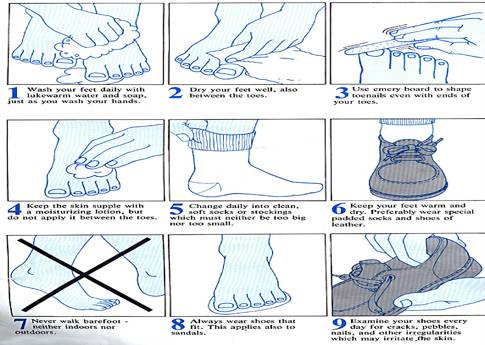Prevention
Both lifestyle changes and medications can decrease uric acid levels. Dietary and lifestyle choices that are effective include reducing intake of food such as meat and seafood, consuming adequate vitamin C, limiting alcohol and fructose consumption, and avoiding obesity. A low-calorie diet in obese men decreased uric acid levels by 100 µmol/l (1.7 mg/dl). Vitamin C intake of 1,500 mg per day decreases the risk of gout by 45%. Coffee, but not tea, consumption is associated with a lower risk of gout. Gout may be secondary to sleep apnea via the release of purines from oxygen-starved cells. Treatment of apnea can lessen the occurrence of attacks.
Prophylaxis
A number of medications are useful for preventing further episodes of gout, including xanthine oxidase inhibitor (including allopurinol and Deuric) and uricosurics (including probenecid and sulfinpyrazone). They are not usually commenced until one to two weeks after an acute attack has resolved, due to theoretical concerns of worsening the attack, and are often used in combination with either an NSAID or colchicine for the first three to six months. They are not recommended until a person has had two attacks of gout, unless destructive joint changes, tophi, or urate nephropathy exist, as medications have not been found cost effective until this point. Urate-lowering measures should be increased until serum uric acid levels are below 300–360 µmol/l (5.0-6.0 mg/dl), and are continued indefinitely. If these medications are being used chronically at the time of an attack, discontinueation is recommended. If levels cannot be brought below 6.0 mg/dl and there are recurrent attacks, this is deemed treatment failure or refractory gout. Overall, probenecid appears less effective than allopurinol.
Prognosis
Without treatment, an acute attack of gout usually resolves in five to seven days. However, 60% of people have a second attack within one year. Those with gout are at increased risk of hypertension, diabetes mellitus, metabolic syndrome, and renal and cardiovascular disease, thus are at increased risk of death. This may be partly due to its association with insulin resistance and obesity, but some of the increased risk appears to be independent.
Without treatment, episodes of acute gout may develop into chronic gout with destruction of joint surfaces, joint deformity, and painless tophi. These tophi occur in 30% of those who are untreated for five years, often in the helix of the ear, over the olecranon processes, or on the Achilles tendons With aggressive treatment, they may dissolve. Kidney stones also frequently complicate gout, affecting between 10 and 40% of people, and occur due to low urine pH promoting the precipitation of uric acid. Other forms of chronic renal dysfunction may occur.
Foot Care
One of the more serious complications due to uncontrolled diabetes is poor circulation to lower extremities which can result in gout. Gout can eventually lead to hospitalization and amputations. It is imperative that you check your feet on a regular basis and keep your glucose levels in appropriate ranges. Proper foot care for diabetics:



ไม่มีความคิดเห็น:
แสดงความคิดเห็น